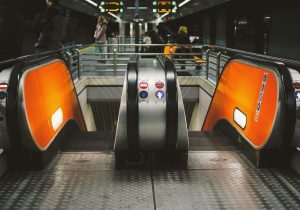Software-Defined Vehicles: Upgrading Your Car Like a Smartphone
When it comes to cars, advancements in technology have always been a major driving force. From the introduction of power steering in the 1950s to the rise of electric and self-driving vehicles in recent years, cars have come a long way in terms of innovation. And now, with the rise of software-defined vehicles, we are at the brink of another major transformation in the automotive industry.
Introducing Software-Defined Vehicles
Software-defined vehicles, or SDVs, refer to cars that have a high level of computing and connectivity capabilities, similar to a smartphone. These vehicles are equipped with various sensors, cameras, and other technologies that enable them to collect and process vast amounts of data, making them more intelligent and autonomous.
The Impact of SDVs
The integration of software and hardware within a car has opened up a plethora of possibilities. With data being collected and analyzed in real-time, SDVs can provide drivers with valuable insights, making driving safer and more convenient.
One of the key impacts of SDVs is the move towards autonomous driving. With the help of artificial intelligence and machine learning, these vehicles can now navigate through traffic, make decisions, and respond to unexpected situations on the road. This not only reduces the risk of accidents but also allows drivers to relax and be more productive during their commute.
Upgrading Your Car like a Smartphone
Just like how we update our smartphones with the latest software to improve their performance, SDVs can also be upgraded with the latest software to enhance their capabilities. This means that your car can constantly evolve and improve, providing you with a better driving experience.
Customization and Personalization
With the use of software, SDVs allow for a high level of customization and personalization. From adjusting the driving experience to suit your preferences to setting up your preferred entertainment options, these vehicles give you the power to make your car truly yours.
Connectivity and Integration
Another major feature of SDVs is their ability to connect and integrate with other devices. This means that your car can seamlessly connect to your smartphone, smartwatch, and other devices, allowing for a more connected and convenient driving experience. For example, you can use your smartwatch to start your car, adjust the temperature, or track your vehicle’s location.
The Future of SDVs
The potential for software-defined vehicles is immense. With major advancements being made in the fields of artificial intelligence, machine learning, and connectivity, we can expect to see more and more SDVs on the roads in the near future.
Challenges to Overcome
However, with every new technology, there are challenges that need to be addressed. One of the major challenges for SDVs is cybersecurity. As these vehicles become more connected and rely on data, they also become vulnerable to cyber threats. Automakers and technology companies are continually working towards developing robust security measures to ensure the safety and privacy of drivers.
The Road to Mass Adoption
Mass adoption of SDVs would require the development of a fully integrated network of infrastructure and regulations. This includes the development of smart roads, traffic management systems, and laws and regulations to ensure the safe use of these vehicles.
Final Thoughts
Software-defined vehicles are not just a futuristic concept, but a reality that is quickly becoming a part of our lives. With their numerous benefits and potential, SDVs are set to revolutionize the way we drive. They are not just cars, but intelligent machines that continuously learn and adapt to provide us with a better and safer driving experience. And just like how we constantly upgrade our smartphones, SDVs will continue to evolve and improve, making them an essential part of our daily lives.











